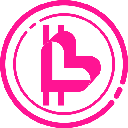-
 bitcoin
bitcoin $95203.028270 USD
-4.12% -
 ethereum
ethereum $3151.730711 USD
-1.61% -
 tether
tether $0.999170 USD
-0.04% -
 xrp
xrp $2.273039 USD
-1.55% -
 bnb
bnb $924.288432 USD
0.14% -
 solana
solana $141.112899 USD
-2.02% -
 usd-coin
usd-coin $0.999964 USD
0.02% -
 tron
tron $0.293976 USD
0.82% -
 dogecoin
dogecoin $0.160772 USD
-1.84% -
 cardano
cardano $0.506357 USD
-3.90% -
 hyperliquid
hyperliquid $37.900515 USD
0.03% -
 zcash
zcash $644.358451 USD
26.66% -
 chainlink
chainlink $14.062007 USD
-2.60% -
 bitcoin-cash
bitcoin-cash $484.381072 USD
-5.12% -
 unus-sed-leo
unus-sed-leo $9.199874 USD
0.27%
What is the concept of proposer-builder separation (PBS)?
Proposer-Builder Separation (PBS) enhances Ethereum’s decentralization by splitting block production into proposers and specialized builders, improving efficiency and MEV fairness.
Nov 11, 2025 at 08:20 pm

Understanding Proposer-Builder Separation (PBS)
1. Proposer-Builder Separation is a design framework introduced in Ethereum's consensus layer to enhance network efficiency and decentralization. It separates two critical roles in block production: the proposer and the builder. The proposer, selected randomly from the validator set, is responsible for choosing which block to include in the blockchain. The builder, on the other hand, constructs the actual content of the block, including transaction ordering and execution.
2. This separation allows specialized entities to focus on optimizing block construction for maximum profitability, primarily through effective management of Maximal Extractable Value (MEV). By outsourcing block building to dedicated off-chain participants, validators do not need high-performance infrastructure to remain competitive, lowering the barrier to entry for decentralized participation.
3. PBS operates within a permissionless marketplace where multiple builders compete to submit the most valuable blocks. Validators receive sealed bids from builders and select the highest-paying valid block without knowing its contents until it is revealed. This mechanism reduces centralization risks by preventing any single entity from dominating block construction.
4. The implementation of PBS supports the transition toward distributed proposers and strengthens resistance against censorship. Since builders must follow strict rules when constructing blocks, and proposers retain the right to reject invalid or censored proposals, the system maintains checks and balances across the network.
5. One of the core benefits of PBS is its ability to internalize MEV in a transparent and fair manner. Instead of allowing private extractive practices that benefit only a few, the competitive bidding process redistributes MEV rewards back into the network, often benefiting stakers and improving overall economic alignment.
How PBS Impacts Network Security
1. By decoupling block construction from proposal, PBS mitigates the risk of centralization caused by resource-intensive block building. Without PBS, large validators with superior hardware could gain an unfair advantage, threatening the egalitarian nature of proof-of-stake systems.
2. The introduction of a competitive builder market ensures that no single builder can monopolize block space or manipulate transaction inclusion arbitrarily. This fosters a more resilient ecosystem where censorship attempts are detectable and economically disincentivized.
3. Validators act as gatekeepers under PBS, maintaining final control over what gets included in the chain. Even if a malicious builder attempts to include illicit transactions, the proposer can refuse the block, preserving protocol integrity.
4. The cryptographic commitment scheme used in PBS—where builders submit blinded block headers along with bids—prevents proposers from selectively censoring bids based on content. Once a proposer commits to a bid, they must include the corresponding block or face slashing penalties.
5. As the builder ecosystem evolves, additional layers like SUAVE (Single Unifying Auction for Value Expression) aim to further decentralize how MEV is captured and distributed, reinforcing security through modular, composable architectures.
The Role of Builders in the PBS Ecosystem
1. Builders are specialized nodes tasked with assembling transactions into full blocks. They optimize ordering to maximize fees and MEV opportunities while adhering to network rules and avoiding banned addresses or sanctioned content.
2. These entities operate independently from validators and often run sophisticated algorithms to simulate transaction bundles, forecast profitability, and interact with external markets such as DeFi protocols and auction platforms.
3. Builders participate in a real-time auction where they bid for the right to have their constructed block proposed by a validator. Higher bids increase the likelihood of selection, creating a dynamic pricing model for block space utilization.
4. To ensure reliability, builders must consistently deliver valid blocks on time. Failure to do so results in reputation loss and reduced chances of future selection, enforcing accountability without centralized oversight.
5. Over time, the builder landscape has diversified, with open-source initiatives promoting transparency and trustlessness. Projects like Flashbots have pioneered ethical MEV extraction, advocating for fairness and long-term sustainability in the builder economy.
Common Challenges and Trade-offs in PBS
1. While PBS improves decentralization at the validator level, concerns remain about potential centralization among top-performing builders who dominate bid volumes. Monitoring builder concentration is essential to maintain healthy competition.
2. The complexity introduced by off-chain coordination between proposers and builders increases dependency on reliable communication channels. Network latency or relay failures can lead to missed blocks or revenue loss.
3. Censorship detection remains challenging despite improvements, as subtle forms of exclusion may go unnoticed without robust monitoring tools and public block comparators.
4. Upgrading legacy infrastructure to support PBS requires coordination across client teams, node operators, and service providers. Inconsistent adoption can create fragmentation and interoperability issues during transitional phases.
Frequently Asked Questions
What happens if a builder submits an invalid block?If a builder provides an invalid block after winning the auction, the proposer cannot include it without risking penalties. The validator would skip the slot or fall back to a local block builder, and the dishonest builder would lose credibility and future bidding opportunities.
Can anyone become a block builder?Yes, the PBS model is designed to be permissionless. Any participant with sufficient technical capability and capital can operate a builder, provided they meet timing requirements and submit valid bids through relays or directly.
How does PBS affect regular users transacting on Ethereum?End users experience faster confirmation times and improved inclusion guarantees, especially during congestion. Transparent MEV capture also reduces hidden frontrunning, leading to fairer transaction processing outcomes.
Is PBS currently active on Ethereum mainnet?PBS is partially implemented via MEV-Boost, an interim solution allowing validators to outsource block building. Full integration into the consensus protocol is planned for future upgrades, enhancing scalability and resilience.
Disclaimer:info@kdj.com
The information provided is not trading advice. kdj.com does not assume any responsibility for any investments made based on the information provided in this article. Cryptocurrencies are highly volatile and it is highly recommended that you invest with caution after thorough research!
If you believe that the content used on this website infringes your copyright, please contact us immediately (info@kdj.com) and we will delete it promptly.
- Hedera, Bitcoin, BTCFi: WBTC Integration Sparks DeFi Evolution
- 2025-11-16 00:05:01
- Shanklin Veterans Get a Pre-Christmas Treat: A Heartwarming Gathering
- 2025-11-15 23:25:01
- Zero Knowledge Proof (ZKP): Revolutionizing Crypto Presales with Fairness and Transparency
- 2025-11-15 23:25:01
- SEC, Crypto Assets, and Classification: A New York Minute on Regulation
- 2025-11-15 23:20:01
- ASTER, UNI, and Zero Knowledge Proof: Decoding the Crypto Buzz in NYC
- 2025-11-15 23:20:01
- Crypto Presales with 10x Potential: Finding the Next Big Thing
- 2025-11-15 23:15:01
Related knowledge

What is the difference between a blockchain and a distributed ledger technology (DLT)?
Nov 14,2025 at 08:59pm
Understanding the Core Structure of Blockchain and DLT1. A blockchain is a specific type of distributed ledger technology that organizes data into blo...

How does a blockchain handle data storage?
Nov 14,2025 at 04:40pm
Understanding Blockchain Data Structure1. A blockchain stores data in sequential blocks, each containing a list of transactions or records. These bloc...

What are the risks of investing in blockchain projects?
Nov 14,2025 at 10:19am
Risks Associated with Volatility in Cryptocurrency Markets1. The price of digital assets can shift dramatically within minutes due to speculation, new...

What is the role of blockchain in creating a circular economy?
Nov 15,2025 at 02:19am
Enhancing Transparency in Supply Chains1. Blockchain technology provides an immutable ledger that records every transaction across supply chains, ensu...

How can blockchain technology be used in healthcare?
Nov 14,2025 at 07:39pm
Secure Patient Data Management1. Blockchain enables decentralized storage of medical records, ensuring patients maintain control over who accesses the...

What is a light node versus a full node in a blockchain?
Nov 15,2025 at 02:00pm
Understanding Light Nodes in Blockchain Networks1. A light node, also known as a lightweight client, does not download the entire blockchain. Instead,...

What is the difference between a blockchain and a distributed ledger technology (DLT)?
Nov 14,2025 at 08:59pm
Understanding the Core Structure of Blockchain and DLT1. A blockchain is a specific type of distributed ledger technology that organizes data into blo...

How does a blockchain handle data storage?
Nov 14,2025 at 04:40pm
Understanding Blockchain Data Structure1. A blockchain stores data in sequential blocks, each containing a list of transactions or records. These bloc...

What are the risks of investing in blockchain projects?
Nov 14,2025 at 10:19am
Risks Associated with Volatility in Cryptocurrency Markets1. The price of digital assets can shift dramatically within minutes due to speculation, new...

What is the role of blockchain in creating a circular economy?
Nov 15,2025 at 02:19am
Enhancing Transparency in Supply Chains1. Blockchain technology provides an immutable ledger that records every transaction across supply chains, ensu...

How can blockchain technology be used in healthcare?
Nov 14,2025 at 07:39pm
Secure Patient Data Management1. Blockchain enables decentralized storage of medical records, ensuring patients maintain control over who accesses the...

What is a light node versus a full node in a blockchain?
Nov 15,2025 at 02:00pm
Understanding Light Nodes in Blockchain Networks1. A light node, also known as a lightweight client, does not download the entire blockchain. Instead,...
See all articles










































































